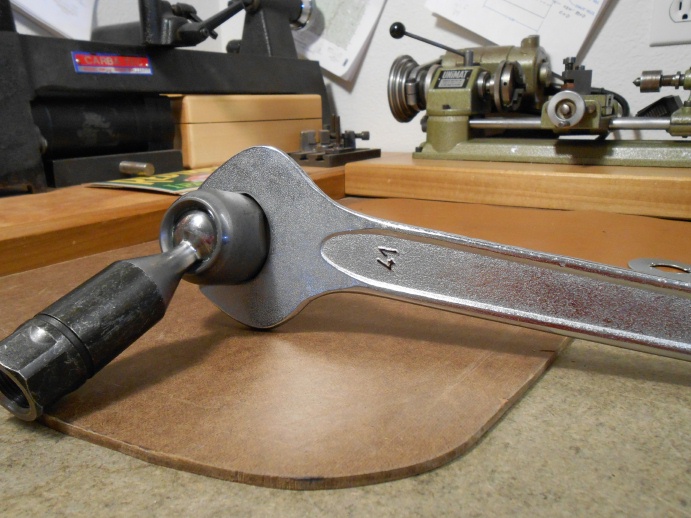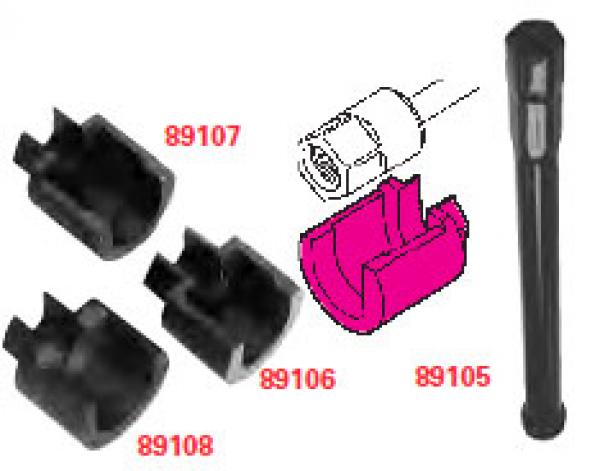The size of wrench you need for an inner tie rod depends on the specific car model. The average size is usually between 14 and 19 mm, but it is best to check your car’s owner manual to be sure. An inner tie rod is a part of the steering system in a car, and it helps to connect the steering wheel to the wheels.
Most inner tie rods use a 21 mm wrench. However, it’s always best to check your vehicle’s owner manual to be sure. An inner tie rod is an important part of your vehicle’s suspension system.
It connects the steering rack to the outer tie rod. If you have a loose or damaged inner tie rod, it can cause problems with your vehicle’s handling.

Credit: www.tacomaworld.com
What Tools are Needed to Change Inner Tie Rods?
Inner tie rods are an important part of a car’s suspension, and they need to be changed from time to time. The tools needed to change inner tie rods are:
– A socket wrench
– A ratchet
– An inner tie rod end remover tool
– A new inner tie rod (of the correct size)
First, you will need to loosen the lug nuts on the front wheels of your car. Once the lug nuts are loose, jack up the front end of your car and place jack stands under each side for support. With the car safely supported, remove the wheels.
Next, locate the inner tie rod ends at each steering knuckle. There is a nut that secures each inner tie rod end in place; use your socket wrench to remove these nuts. With the nuts removed, you can now use your inner tie rod end remover tool to separate the old inner tie rods from the steering knuckles.
Be careful not to damage or scratch the mating surfaces of either piece as you remove them.
Now it is time to install your new inner tie rods. First, clean any debris or rust off of the threads on both sides of each steering knuckle where the inner tie rods will attach.
Next, thread one side of each newinner tie rod onto its respective steering knuckle until it is hand tight; do not use any tools at this stage. Now take your socket wrench and tighten each nut until it is snug againstthe corresponding washer; again, do not overtighten these nuts as this could damagethe threads or break/strip them entirely. Finally, reattach your wheels and loweryour car back down to ground level before tightening all of your lug nuts byhand as well.
.
What Size Nut Goes on the End on a Tie Rod?
Assuming you are referring to the tie rod end nut size on a vehicle, the answer can vary depending on the make and model of your vehicle. You can typically find this information in your car’s owner manual or by doing a quick Google search of your car’s make and model. For example, a 2016 Honda Civic has a 21 mm tie rod end nut size.
How Do You Loosen an Inner Tie Rod End?
Inner tie rod ends are an important part of your car’s suspension system. They connect the inner ends of the tie rods to the steering knuckle. Over time, these parts can become worn and loosen, causing problems with your car’s handling.
If you suspect that your inner tie rod end is loose, there are a few things you can do to check it.
First, take a look at the joint where the inner tie rod end connects to the steering knuckle. If there is any play or movement in this joint, it’s likely that the inner tie rod end is loose.
Next, grab hold of the tire and try to move it back and forth. If you can feel any play in the steering, this is another sign that the inner tie rod end is loose.
If you confirm that the inner tie rod end is indeed loose, there are a few ways to fix it.
The easiest way is to simply replace the part with a new one. This will require disassembling part of your suspension system, so it’s best to leave this job to a professional mechanic if you’re not confident in your own skills.
Another option is to tighten the nut that secures the inner tie rod end to the steering knuckle.
This will require some special tools, but it’s generally not too difficult to do yourself if you’re comfortable working on your car. Simply remove any other parts that might be blocking access to the nut (such as CV joints or brake lines), then use a wrench or socket to tighten it down until there’s no more play in the joint.
Whichever method you choose, be sure to have your car checked by a professional afterwards to make sure everything has been properly adjusted and tightened before driving again.
Easy inner tie rod tool
Tie Rod End Replacement Cost
If you’re noticing some unevenness in your steering or your tires are wearing out prematurely, it might be time to replace your tie rod ends. But how much does this repair cost?
Tie rod end replacement typically costs between $200 and $400, depending on the make and model of your vehicle.
The parts themselves usually cost between $50 and $100, while labor adds another $100 to $300.
If you’re experiencing any of the above symptoms, don’t delay in getting your tie rod ends checked out and replaced if necessary. This is a relatively inexpensive repair that can save you from more costly problems down the road.
Inner Tie Rod Tool
An inner tie rod tool is a specialized tool that is used to remove and install the inner tie rod on a vehicle. This tool is necessary because the inner tie rod is located in a difficult to reach area and is held in place by a nut that can be very difficult to remove. The inner tie rod tool makes this process much easier and faster, which is why it is an essential tool for any mechanic or DIYer who works on their own vehicles.
Inner Tie Rod Removal Tool
If your car has been making a creaking noise when you turn the steering wheel, it’s likely that your inner tie rod ends are worn out. While this is a relatively easy repair to do yourself, it does require special tools. An inner tie rod removal tool is specifically designed to remove the retaining nut on the inner tie rod end so that it can be replaced.
The first step is to loosen the nut that secures the outer tie rod end to the steering knuckle. You’ll need a wrench for this. Next, use the inner tie rod removal tool to loosen and remove the retaining nut on the inner tie rod end.
Be sure to keep track of which way the nut was facing so that you can put it back on correctly. With the retaining nut removed, you can now pull the inner tie rod end out of its housing.
To install the new inner tie rod end, simply reverse these steps.
First, insert the new inner tie rod end into its housing and tighten down the retaining nut with your Inner Tie Rod Removal Tool . Then, reattach the outer tie rood end to the steering knuckle and tighten its securing nut with your wrench. That’s it!
Inner Tie Rod Wrench Autozone
Inner tie rod wrenches are used to remove and replace the inner tie rods on a vehicle. They are available in a variety of sizes and styles to fit most vehicles. Inner tie rod wrenches can be found at most auto parts stores, such as AutoZone.
Conclusion
The size of the wrench you need for an inner tie rod is determined by the size of the nut. The most common sizes are 12mm, 14mm, and 17mm. You will also need a socket that is the same size as the wrench.



